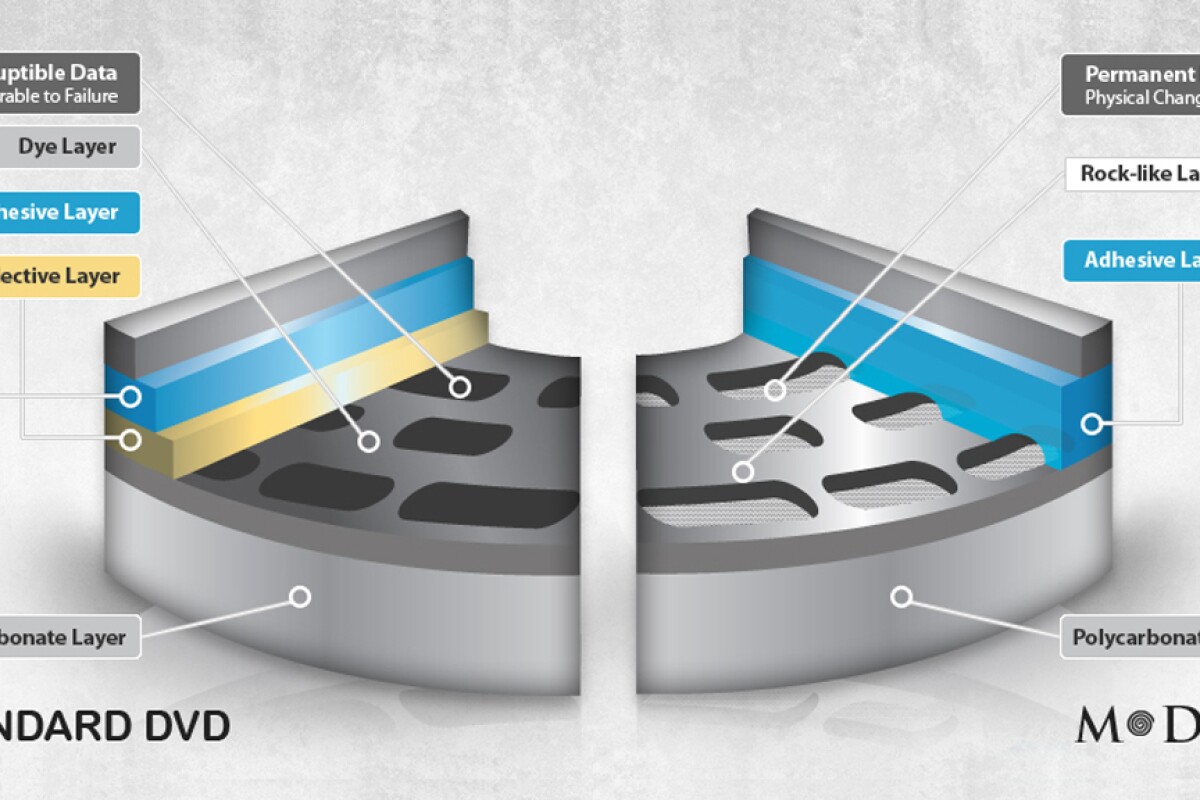Despite the widespread belief upon their introduction to the market in the early 1980s that CDs would safely store data encoded on them forever, CDs and DVDs are actually susceptible to damage from both normal use and environmental exposure and have an average lifespan of under 10 years. A new optical disc company based in Salt Lake City called Millenniata is set to deliver a new type of optical disc that can be read on standard DVD drives but will safely store data for up to 1,000 years.
The new disc, called M-DISC, stores data in the same way as CDs and DVDs - as a series of pits - but instead of the pits being burned into organic dyes using a laser as is the case with traditional optical discs, the pits are literally etched into a layer of a "rock-like material" composed of inorganic materials and compounds including metals and metalloids using a higher powered laser. The resultant pits aren't affected by temperature, humidity or sunlight. Millenniata says it expects this layer would actually remain readable for over 10,000 years, however, the polycarbonate layers it is sandwiched between are the weak links and would only be reliable for at least 1,000 years.

An accelerated life test performed by the U.S. Naval Air Warfare Center Weapons Division tested the M-DISC against five brands of conventional archival discs currently on the market and found that the M-Disc suffered no degradation or data loss, while all the other discs failed. The data stored on an M-DISC will even survive being dipped into a vat of liquid nitrogen at -180°C (-292°F) before being transferred to a container of near boiling water - handy if that's how you treat your DVDs.
M-DISCs are a write-once technology designed as a cheap permanent backup solution that is still backwards compatible with existing DVD drives, including consumer DVD players. Millenniata says its M-DISCs offer comparable performance to standard DVDs and provide the same 4.7 GB storage capacity as a single-sided, single-layer DVD. The company says it is also currently working on a Blu-Ray version of the M-DISC to provide greater storage capacity.
Millenniata has partnered with Hitachi-LG Data Storage, Inc, which will manufacture M-READY DVD drives and sell them under its DVD brands. There's no word on what these devices will sell for, but the M-DISCs will be priced at US$2.99 for a single disc, $13.89 for a pack of five, and $26.59 for a pack of ten when they go on sale through the Millenniata website next month.





